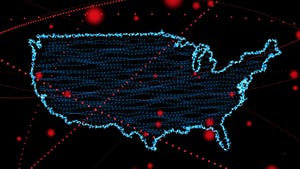EdgeConneX to Tap into Submarine Cables for Better Data Center Connectivity
Partnership with Electric Lightwave to increase transpacific connectivity options for data center customers in San Diego
October 28, 2016

EdgeConneX’s strategy has revolved around solving lots of data center connectivity problems for customers, and the latest problem area the company is taking on is access to submarine cables.
Moving your network traffic to and from submarine cable landing stations is notoriously difficult and expensive. Incumbent carrier consortia have been jealously guarding their role as gatekeepers to this crucial component of the internet and charging an arm and a leg for access.
In recent years, however, their stranglehold on cross-continental connectivity has been weakening, with major end users getting increasingly involved in submarine cable builds to improve data center connectivity between the world’s regions they operate in. The trend started with the transpacific US-Japan Unity cable – funded in part by Google – which came online in 2010, and accelerated recently, with Google, Facebook, Microsoft, and Amazon making major investments in new submarine cable construction projects.
Read more:
There has also been a push by some data center providers to make it easier for their customers to get access to existing landing stations from locations other than the main hubs they have traditionally accessed them from. On the East Coast, for example, New Jersey Fiber Exchange built a data center campus around a landing station in Manasquan, New Jersey, where companies can take colocation space and link to the landing station directly instead of going first to a big carrier hotel in Manhattan. In Puyallup, Washington, the Centeris Transpacific Hub, being built by Benaroya Company-backed Centeris, will provide access to submarine cable landing stations along the West Coast.
EdgeConneX, which has focused on building data centers in underserved metros where content and cloud companies cache popular content and hand it off to last-mile ISPs for delivery to end users, is planning to make its San Diego data center a hub for accessing landing stations in Southern California, an alternative to carrier hotels in downtown Los Angeles.
See also: With Microsoft Data Center Deal, EdgeConneX Takes On Wholesale Giants
EdgeConneX will not be the one providing data center connectivity to the stations. That will be handled by its new partner, Electric Lightwave, which owns a fiber network that stretches across California and reaches into Oregon and Washington, as well as East, into Nevada and Arizona, and even includes a submarine cable system of its own in Southern California, although not a transoceanic one (see the map of Electric Lightwave's network here).
Vancouver, Washington-based Electric Lightwave was recently spun out from a company previously called Integra Telecom Holdings. Integra remained as a company focused on small and mid-size businesses.
Traditionally, there has been two ways to get network traffic to Southern California landing stations: by paying for backhaul from one of the LA carrier hotels, such as One Wilshire, or by collocating directly at the stations, Don MacNeil, EdgeConneX CTO, explained in an interview with Data Center Knowledge.
Both options, provided by incumbents like AT&T and Verizon, will cost you, but fees for the second one are astronomical, he said. Fees for the first option have come down somewhat, since projects like the Unity cable have started to pop up. Before Unity, at the peak, backhauling traffic from downtown LA to a landing station in San Luis Obispo could cost as much as it cost to move it from that landing station all the way to Asia, MacNeil said.
The Unity project not only changed the carrier-consortium model, it also eliminated the two-step process of having to make one deal to take traffic from LA to the coast and another one to take it across the ocean. Unity made the process of moving traffic from US to Asia seamless for the customer, and the recent submarine cable construction projects have adopted a similar model, MacNeil said.
EdgeConneX’s arrangement with Electric Lightwave doesn’t necessarily mean there will be a similar seamless option, but it does mean there will be an additional location outside of LA for access to landing stations and there will be a service provider other than incumbent carriers who will make it easier to move traffic to those landing stations from San Diego, MacNeil said.
The data center provider will make money by selling colocation space to companies interested in tapping into Electric Lightwave’s network and by charging them cross-connect fees ($100 per cross-connect per month) to connect to Electric Lightwave’s equipment.
This is the first of several such arrangements EdgeConneX is planning to make in multiple locations, including on the East Coast, in South America, and in Europe. “We have several proposals in flight to enable this similar construct for other cables,” MacNeil said.
Today, the company has data centers in the US and Europe but not yet in South America. However, “we go where our customers need us, so we’re constantly assessing market opportunities,” he said.
Read more about:
North AmericaAbout the Author
You May Also Like
.jpg?width=300&auto=webp&quality=80&disable=upscale)



.jpg?width=300&auto=webp&quality=80&disable=upscale)


